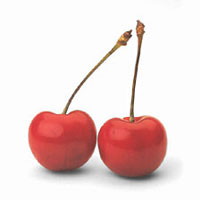
-
Name:
Acerola
-
Scientific Name:
Malpighia glabra
-
Occurrence:
Acerola has been used as an ingredient in jams, jellies, ice cream and fruit juices.
-
Allergy Information:
There is only one case of a patient who developed a skin rash after drinking a glass of apple juice supplemented with acerola, who also had latex allergy. The allergy was associated with oral allergy syndrome to other plant foods.
-
Other Information:
-
Taxonomic Information:
www.hort.purdue.edu/newcrop/morton/barbados_cherry.html
-
Last modified:
18 October 2006
Reviews (0)
References (0)
Clinical History
- Number of Studies:1-5
- Number of Patients:1-5
- Symptoms:
A latex-allergic patient developed urticaria after drinking a glass of apple juice supplemented with acerola. He also suffered from typical seasonal hay fever symptoms and a significant contact urticaria induced by natural rubber latex products. In addition, he experienced an oral allergy syndrome after ingesting avocado, celery and walnut during the pollen season.
Skin Prick Test
- Number of Studies:1-5
- Food/Type of allergen:
Acerola pulp and acerola-containing apple juice.
- Protocol: (controls, definition of positive etc)Histamine (10 mg/mL) and saline solution were used as positive and negative controls repectively. Wheal size same as that for the histamine control was considered positive.
- Number of Patients:
One
- Summary of Results:Skin prick tests were positive to grass pollen mixture, rye, and latex. Weak reactions to plantain, hazel, and birch pollen, and only a limited reaction to mugwort and ragweed pollen were observed. Intracutaneous skin tests with acerola pulp and with acerola-containing apple juice yielded immediate reactions at a dilution of 1/1000 for acerola pulp and at a dilution of 1/100 for apple juice containing acerola. Skin prick tests were negative for apple juice without acerola.
IgE assay (by RAST, CAP etc)
- Number of Studies:0
- Food/Type of allergen:Recombinant latex allergens and native Hev b 6.02 and acerola extracts. Note that no description of the preparation of the extracts is given.
- IgE protocol:
Pharmacia-CAP and ELISA
- Number of Patients:
One
- Summary of Results:
Latex-specific IgE was 24.7 kU/L (CAP class 4), with IgE to grass pollen (CAP class 3), plantain, peanut, tomato, soy bean (CAP class 2), hazelnut pollen, ragweed pollen, banana, green apple, herbal mixture, and nut mixture (CAP class 1) detected. IgE tests by CAP were negative (>0.35 kU/L) for rHev b 1, rHev b 3, rHev b 5, and rHev b 10; and positive for rHev b 6.01, rHev b 6.02, Hev b 6.02, and rHev b 8. IgE to acerola (1.50 kU/L) could be detected.
In inhibition studies, IgE binding to acerola allergens was completely inhibited (100%) by latex and acerola extract, whereas preincubation of the patient's serum with acerola showed nearly complete inhibition to latex (79%) and rHev b 6.01 (85%).
Immunoblotting
- Immunoblotting separation:Not performed
- Immunoblotting detection method:
- Immunoblotting results:
Oral provocation
- Number of Studies:1-5
- Food used and oral provocation vehicle:Apple juice and acerola pulp diluted 1/100 and 1/10 in water and apple juice without acerola supplementation.
- Blind:Open oral challenge
- Number of Patients:
One
- Dose response:Not indicated
- Symptoms:
The reaction was negative for apple juice, but the exposure to acerola pulp, with a latency period of 5 minutes, induced itching and swelling lips.
IgE cross-reactivity and Polysensitisation
Raulf-Heimsoth et al. 2002 have demonstrated the IgEcross-reactivity between latex and acerola resulted from IgE to the allergen prohevein (Hev b 6.01) reacting with a fruit allergen. Given the cross-reactivity between hevein and class I chitinases in fruits such as avocado it seems likely that some types of allergen are present in acerola.
Other Clinical information
Acerola extract is usuallyn added to jams, jellies, and ice cream and especially to fruit juice to enhance the vitamin C content and improve the flavor of some special products.
Reviews (0)
References (1)
-
Raulf-Heimsoth M, Stark R, Sander I, Maryska S, Rihs HP, Bruning T, Voshaar T.
Anaphylactic reaction to apple juice containing acerola: cross-reactivity to latex due to prohevein
J Allergy Clin Immunol. 109(4):715-6.. 2002
PUBMEDID: 11941325